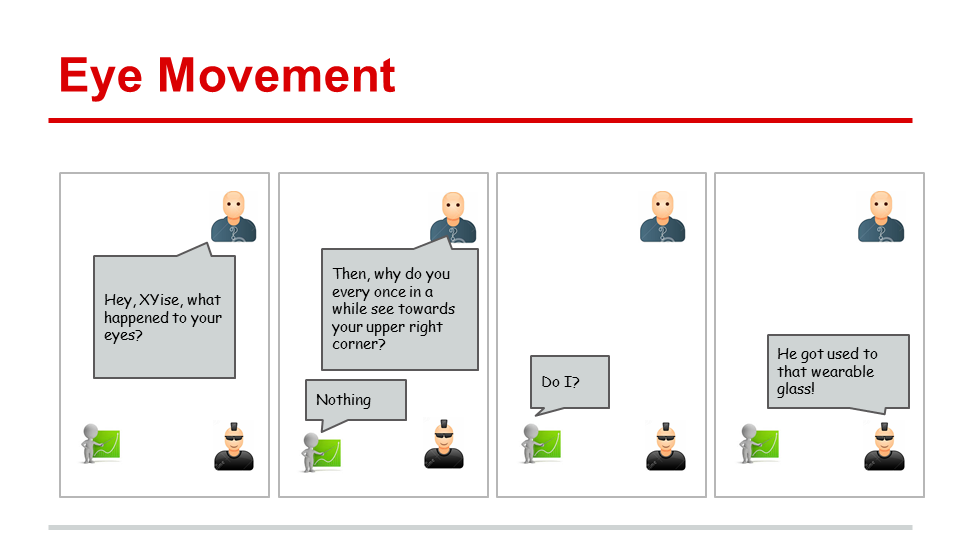
Intro
Remember the days when we’d tilt our heads in confusion at a beeping pager, wondering how to reply? Now, we swipe, tap, and scroll without a second thought. But sometimes, these tech habits seep into our real-world behaviors a bit too much. Ever tried shaking your phone thinking it’s a Polaroid? Or pinching to zoom on a physical newspaper? It’s amusing how gadgets can teach our bodies some… let’s call them ‘interesting’ new tricks. Ready for another chuckle at our tech-driven quirks? Buckle up, because here’s a tale where innovation meets unintended muscle memory!
The Comic
Context
Meet XYise, our resident tech enthusiast, who’s been gleefully experimenting with the latest wearable glass. Word is, it’s already making quite an impression on him!
Meet the Characters
Waggz – The epitome of the “Yes Boss” mantra!
XYise – Questions and Graphs, Written All Over His Face!
Diggz – The witty sidekick of the Boss!
The Cartoon
<< From “Cirque du Biz”, A sridvana’s Comic Strip Conceived in 2015 >> — Excuse me for the PPT visuals! I once dreamt of jazzing it up with a cartoonist’s flair and a dose of humorous dialogues. But here they are, shared in their untouched charm for your blog-reading pleasure!”

Waggz – Concerned: “Hey, XYise, what happened to your eyes?”
XYise – Nonchalant: “Nothing.”
Waggz – Curious: “Then, why do you every once in a while see towards your upper right corner?”
XYise – Puzzled: “Do I?”
Diggz – Amused: “He got used to that wearable glass!”
Contrarian Views
Remember, these contrarian views are just alternative perspectives and aren’t meant to diminish the humor of the joke. They just provide a different lens through which to view the topic.
- Functionality Over Quirk: Wearable glasses, like any other technology, are designed to be functional and aid productivity. While there might be initial adjustments to how one uses them, it doesn’t necessarily lead to lasting quirks like continuously looking in a particular direction.
- Technological Adaptation: Over time, people adapt to new technologies and learn to use them efficiently. Just as people initially found smartphones or even regular glasses odd, any quirks associated with wearable glasses will likely fade with familiarity.
- Ergonomic Design: Companies spend millions on R&D to ensure that their products are ergonomic and user-friendly. The idea that using a product would result in such a pronounced physical quirk might be seen as an over-exaggeration.
- Over-Generalization: Not everyone using wearable glasses will develop the same habits or quirks. Generalizing based on a humorous observation could be seen as unfair to users who don’t exhibit such behaviors.
- Tech Evolution: As with all tech products, wearable glasses will evolve. Initial versions might have quirks, but future iterations will likely address any user discomfort or awkwardness.
- Focus on Benefits: While the joke is light-hearted, it might overshadow the potential benefits of wearable technology, such as augmented reality, accessibility features, and hands-free operations.
MidJourney Prompt with inputs from ChatGPT
Create a cartoonish and humorous image showcasing a tech enthusiast named XYise, prominently wearing a futuristic-looking wearable glass. He’s so engrossed that his eyes are constantly darting towards the upper right corner, a clear sign he’s using the glass’s features. Surrounding him are onlookers, with Waggz pointing at XYise and trying to get his attention, and Diggz standing a bit away, making a cheeky comment. The setting should have a modern, techy atmosphere, and it should be evident that some people are amused by XYise’s new gadget antics. –ar 16:9

